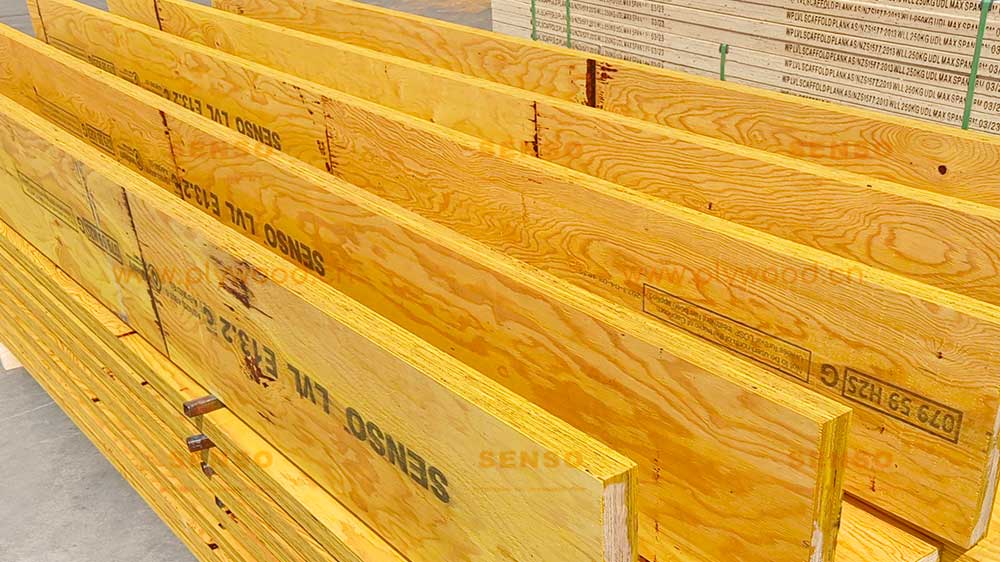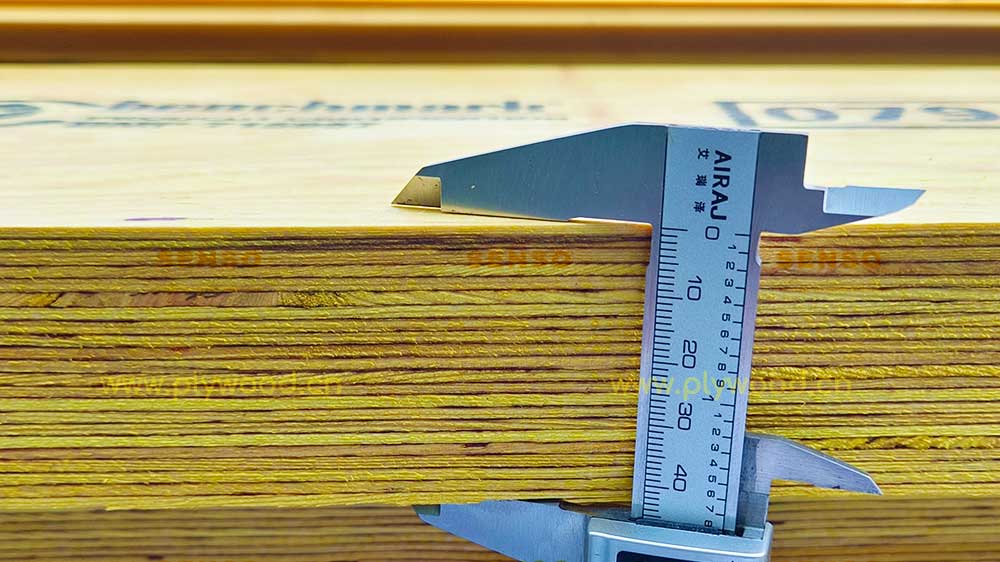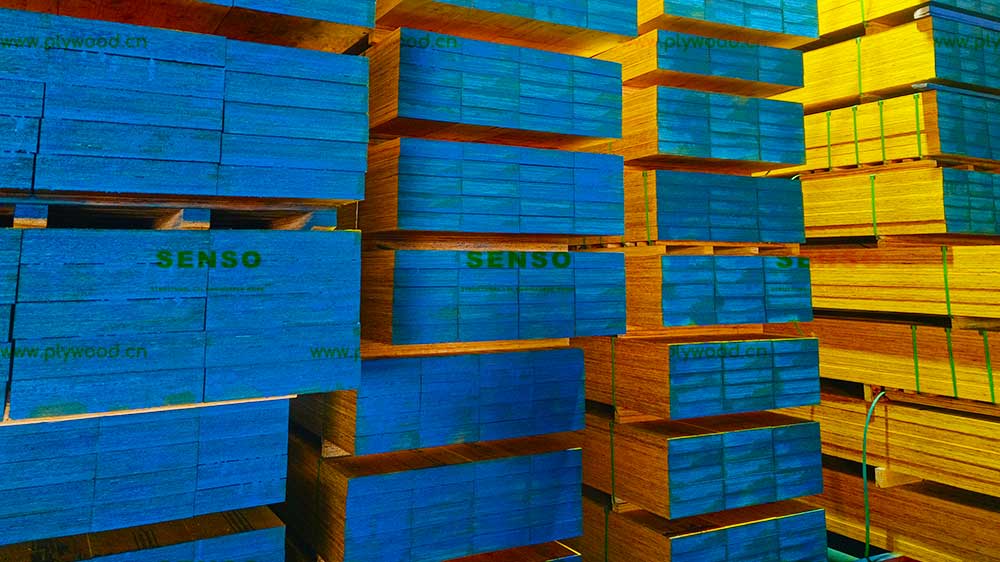What are Glue Laminated Timber Beams?
Glue laminated timber beams, often referred to as glulam beam, are engineered wood products created by bonding together layers of dimensional lumber with durable, moisture-resistant adhesives. This process results in beams that are stronger and more stable than solid wood beams of comparable size. The use of glulam beams is particularly prevalent in timber frame construction, where their strength and versatility allow for innovative architectural designs and large, open spaces.
The production of glulam beams involves selecting high-quality lumber, drying it to a specific moisture content, and then arranging the pieces in a way that maximizes the strength of the final product. The layers are bonded under pressure with waterproof adhesives, creating a single, solid piece of wood that can be used in a variety of structural applications. This manufacturing process ensures that glulam beams are highly resistant to warping, splitting, and shrinking, making them an ideal choice for construction projects requiring long spans and heavy loads.
Glulam beams offer several advantages over traditional solid wood beams. They can be manufactured to exact specifications, allowing for greater design flexibility and precision. Additionally, the use of engineered wood products like glulam beams supports sustainable building practices, as they utilize smaller trees and produce less waste compared to solid timber beams. This combination of strength, stability, and sustainability makes glue laminated timber beams a popular choice in modern construction.
The Evolution of Glue Laminated Timber Beams
The Development of Glulam Technology
Glue laminated timber beams have a long history of development, dating back to the early 20th century. Initially used in Europe for constructing large-span structures, glulam technology quickly spread to other parts of the world. The key to glulam’s success lies in its ability to create large, strong beams from smaller pieces of wood, which are more readily available and easier to handle than large, solid timbers.
Advantages Over Traditional Timber
One of the primary advantages of glue laminated timber beam is their superior strength and stability compared to traditional solid wood beams. The process of laminating multiple layers of wood together results in a product that is less prone to the natural defects found in solid wood, such as knots and grain deviations. This uniformity and consistency make glulam beams an excellent choice for structural applications where reliability and performance are critical.
Applications of Glue Laminated Timber Beams
Residential Construction
Glue laminated timber beams are widely used in residential construction for a variety of applications. They are commonly used as floor joists, roof rafters, and support beams, providing the structural framework for homes. The ability to manufacture glulam beams to precise specifications allows builders to create open, spacious interiors with fewer support columns, enhancing the aesthetic appeal and functionality of residential spaces.
Commercial and Industrial Buildings
In commercial and industrial construction, glue laminated timber beam are often used to create large, open spaces without the need for extensive support structures. Their high strength-to-weight ratio makes them ideal for constructing warehouses, retail spaces, office buildings, and more. The versatility of glulam beams allows architects and engineers to design innovative and functional spaces that meet the demands of modern businesses.
Public Infrastructure
Glue laminated timber beams are also used in the construction of public infrastructure projects, such as bridges, pedestrian walkways, and sports facilities. The durability and load-bearing capacity of glulam beams make them suitable for these high-traffic, high-stress environments. Additionally, the aesthetic appeal of glulam beams enhances the visual impact of public structures, creating functional and visually pleasing spaces for communities.
Enhancing Timber Frame Construction with Glue Laminated Timber Beams
Strength and Stability
The strength and stability of glue laminated timber beam make them a vital component in timber frame construction. Timber frames rely on a combination of vertical posts and horizontal beams to create a robust structural framework. The use of glulam beams in these applications ensures that the structure can support significant loads and withstand environmental stresses, such as wind and seismic activity.
Design Flexibility
One of the key benefits of using glue laminated timber beams in timber frame construction is the design flexibility they offer. Glulam beams can be manufactured in a variety of shapes and sizes, allowing architects to create unique and innovative designs that would be difficult or impossible to achieve with traditional solid wood beams. This flexibility extends to curved and arched beams, which can add both structural integrity and aesthetic appeal to a building.
Environmental Benefits of Glue Laminated Timber Beams
Sustainable Building Practices
The use of glue laminated timber beams supports sustainable building practices in several ways. First, the production of glulam beams makes efficient use of smaller trees and fast-growing species, reducing the demand for old-growth timber. Additionally, the manufacturing process generates less waste compared to traditional solid wood beams, as the smaller pieces of wood can be more effectively utilized.
Reduced Carbon Footprint
Glue laminated timber beams also contribute to a reduced carbon footprint in construction. Wood is a renewable resource that sequesters carbon throughout its life cycle. The production of glulam beams generates fewer greenhouse gas emissions compared to other building materials, such as steel and concrete. This makes glulam beams an environmentally friendly choice for builders and developers looking to minimize their environmental impact.
Innovations in Glue Laminated Timber Beam Technology
Advanced Manufacturing Techniques
Advancements in manufacturing techniques continue to improve the quality and performance of glue laminated timber beams. New adhesives and bonding methods enhance the strength and durability of glulam beams, making them even more reliable for structural applications. Additionally, improvements in wood processing and treatment ensure that glulam beams can withstand harsh environmental conditions and maintain their integrity over time.
Integration with Smart Building Technologies
The integration of LVL beams with smart building technologies is an emerging trend in the construction industry. By embedding sensors and monitoring systems within glulam beams, builders can gather real-time data on structural performance, environmental conditions, and energy usage. This information can be used to optimize building maintenance, improve energy efficiency, and ensure the long-term safety and stability of timber frame structures.
The Role of Glue Laminated Timber Beams in Modern Architecture
Aesthetic Appeal
Glue laminated timber beams are not only functional but also offer significant aesthetic benefits. The natural beauty of wood, combined with the precision of engineered products, allows architects to create visually stunning designs. Exposed glulam beams can serve as both structural and decorative elements, adding warmth and character to any building.
Versatility in Design
The versatility of timber frame extends to their use in various architectural styles, from traditional to contemporary. Whether used in rustic timber frame homes or sleek, modern commercial buildings, glulam beams provide the flexibility needed to achieve a wide range of design visions. This adaptability makes them a preferred choice for architects seeking to push the boundaries of conventional construction.
Addressing Challenges in Using Glue Laminated Timber Beam
Cost Considerations
While glulam timber beam offer many advantages, their cost can be higher than traditional solid wood beams. However, the long-term benefits, such as reduced maintenance costs and enhanced structural performance, often justify the initial investment. Additionally, as the demand for sustainable building materials grows, the cost of glulam beams is expected to become more competitive.
Availability and Supply Chain
The availability of glue laminated timber beams can sometimes be a challenge, particularly in regions where the supply chain is less developed. Builders and developers need to work closely with reliable suppliers to ensure a steady and timely supply of glulam beams. Establishing strong relationships with manufacturers and distributors can help mitigate these challenges and ensure the success of construction projects.
Future Trends and Innovations in Glue Laminated Timber Beams
Integration with Green Building Initiatives
As the construction industry continues to prioritize sustainability, the use of glue laminated timber beams is expected to increase. These beams align with green building initiatives by reducing the environmental impact of construction and supporting sustainable forestry practices. Future innovations in glulam technology will likely focus on enhancing these environmental benefits, further solidifying their role in eco-friendly construction.
Advances in Material Science
Advances in material science are set to revolutionize the performance of glue laminated timber beams. Researchers are exploring new wood species, adhesives, and treatments to enhance the strength, durability, and sustainability of glulam beams. These advancements will open up new possibilities for their application in more demanding environments and innovative architectural designs.
Glue Laminated Timber Beam in Sustainable Construction
Energy Efficiency
Glue laminated timber beams contribute to energy-efficient building designs. Wood has natural insulating properties that help regulate indoor temperatures, reducing the need for heating and cooling. This leads to lower energy consumption and cost savings for building occupants. The use of glulam beams in construction can significantly enhance the energy performance of buildings, making them more sustainable and comfortable.
Lifecycle Benefits
The lifecycle benefits of glue laminated timber beam extend beyond their initial installation. Wood is a renewable resource, and glulam beams can be recycled or repurposed at the end of their useful life. This contributes to a circular economy in the construction industry, reducing waste and promoting resource efficiency. By choosing glulam beams, builders can create structures that are not only sustainable during construction but also throughout their lifecycle.
FAQs About Glue Laminated Timber Beams
- What are glue laminated timber beams used for?
Glue laminated timber beams, or glulam beams, are used in a variety of construction applications, including residential, commercial, and public infrastructure projects. They are commonly used as floor joists, roof rafters, support beams, and structural elements in timber frame construction.
- How do glue laminated timber beams compare to solid wood beams?
Glue laminated timber beams offer superior strength, stability, and durability compared to solid wood beams. The laminating process eliminates natural defects and provides consistent performance, making glulam beams a reliable choice for structural applications.
- Are glue laminated timber beam environmentally friendly?
Yes, glue laminated timber beams are environmentally friendly. They are made from renewable wood resources and have a lower carbon footprint compared to other building materials like steel and concrete. The production process also generates less waste, supporting sustainable building practices.
- Can glue laminated timber beams be used in residential construction?
Absolutely. Glue laminated timber beams are widely used in residential construction for applications such as floor joists, roof rafters, and support beams. Their strength and versatility make them an excellent choice for creating reliable and durable homes.
- What are the benefits of using glue laminated timber beam in construction?
Glue laminated timber beams offer numerous benefits, including high load-bearing capacity, design flexibility, and improved resistance to environmental factors. They also contribute to sustainable building practices by utilizing renewable resources and reducing carbon emissions.
Post time: Aug-17-2024




